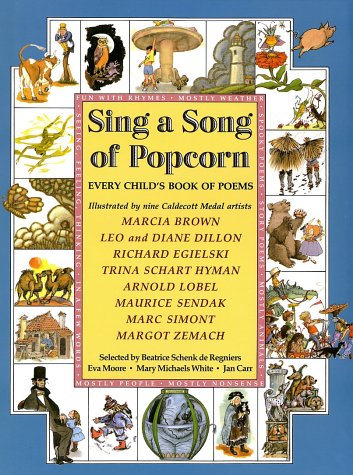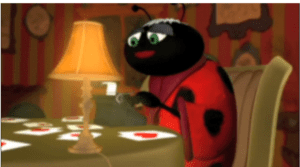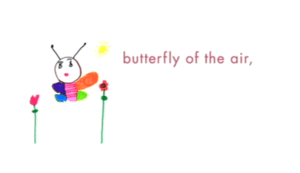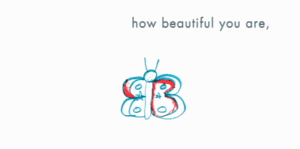Beyond Seuss and Silverstein :: Celebrating National Poetry Month with Your Kids
April is National Poetry Month, encouraging a celebration and an appreciation of poetry. Many people think of poetry as stodgy, inaccessible, highfalutin accumulations of big words or mushy, gushy, love dribble. And when it comes to poetry for kids, many people think only excessively (and sometimes annoyingly) rhyming or sing-songy poetry counts. But poetry, with and without rhyme, can actually be easy to read, beautiful but down to earth, and fun—i.e. relatable to children! As the Poetry Foundation says, “young people have a natural receptivity to poetry and are its most appreciative audience.” Not only this, poetry is great for teaching children figurative thinking, which is good for their developing brains. Metaphors are proven to actually light up both sides of the brain. When both the left and the right hemispheres of the brain are active, it can lead to good health, helping children develop empathy and healthy cognitive functioning.
To get started, here are some ways to celebrate National Poetry Month by introducing poetry to your children beyond the tried and true Dr. Seuss or even Shel Silverstein models.
First, I’d like to show you a couple of videos as a great way to bring poetry to your child. HBO® and The Poetry Foundation have teamed up and given us “Classical Baby (I’m Grown Up Now): The Poetry Show” designed to introduce children to poetry by animating the readings of the poems and setting them to music.
The first is “A Very Valentine” written by Gertrude Stein, read by the author herself animated as a lovely lady bug. It’s short. It’s cute. It’s fun. And it’s poetry by a Modernist American novelist, poet, and playwright who hosted a salon in Paris where literary and artistic greats such as Hemingway and Picasso hung out.
The second example from this series is “Meriposa” by Federico García Lorca read by Andy Garcia. The animation features the translation with children’s drawings of butterflies. Great for encouraging bilingual learning!
More of these can be found on HBO® as well as on DVD and digital download.
Next, I’d like you to introduce you to our very own Young People’s Poet Laureate, Margarita Engle, selected and supported by the Poetry Foundation. Throughout her tenure as Laureate, Engle gives suggestions on the foundation’s website for poetry to share with young people. For April, she has suggested Martí’s Song for Freedom/ Martí y sus versos por la libertad By Emma Otheguy, Childrens Book Press, 2017.
Engle has also written great poems for kids, like this one: “Tula [‘Books are door-shaped’]” which addresses a child’s yearning to read when she has been told she shouldn’t.
Finally, I’d like to suggest this anthology of poetry for children:

Sing a Song of Popcorn: Every Child ‘s Book of Poems (hc): Every Child’s Book Of Poems features over 100 poems for children, some old favorites and some new delights, accompanied by beautiful illustrations throughout by different artists.
I hope you will consider diving into poetry this April and begin to the reap the benefits of what it has to offer for your children. Perhaps it will begin a long love affair with the form.
Maybe you and your children will be inspired to write your own poems! I’ll leave you with a few fun prompts I found over at Writeshop:
A: Tiny things are all around you! Write a poem about something very small, such as a piece of lint, an M&M, a button, an ant, or a Lego brick. Your poem must be tiny too, containing only five lines.
B: Write a poem to your favorite color. Include objects, places, or feelings that remind you of that color.
C: Reach for the nearest book and open to a random page. Make a list of ten words that jump out at you. Write a poem using at least five of those words.












